Why Your Dog Stares at You While You Eat (and How to Handle It)
Is your dog staring you down while you eat? Learn when and how to set boundaries.
Is your dog staring you down while you eat? Learn when and how to set boundaries.
by Katie Koschalk, | April 25, 2025

Lucas Ottone / Stocksy
You sit down with your dinner, fork in hand, ready to enjoy your meal in peace, when you feel it: an unrelenting, piercing gaze. You look up and see your dog sitting perfectly still, eyes locked on you like they’re trying to burn a hole through your soul. Suddenly, every bite feels like a betrayal.
Why do dogs stare at you while you eat? Is it hunger? Hope? Affection? A guilt-inducing superpower? This guide explores the reasons behind this behavior, its connection to instincts, bonding, and learned habits, and how to gently discourage it if it becomes a bit much.
Dogs are masters of the mealtime stare-down, and they’re usually doing it for a reason (or several). Here are some of the most common reasons behind this behavior.
The most obvious (and most common) reason dogs stare at you while you eat is simple: They want your food. Even if they’re not actually hungry, the mouthwatering smell of your meal is enough to grab their attention. Staring is their polite, nonverbal way of saying, “Hey, are you gonna share that?”
Dogs are experts at making associations. If you’ve ever slipped your pup a piece of food during dinner, even just once, they may have learned that staring leads to a reward. Over time, it becomes a learned behavior that’s hard to break.

Sometimes it’s okay. Other times, it can mean they’re feeling discomfort. Which one applies to your dog? We help you figure that out.
Dogs are social, observant animals who like to be involved in their humans’ activities. Since dogs rely heavily on their senses and body language, they may stare to try to understand what you’re doing, and if it might involve them.
In some cases, your dog’s stare might be a sign of boredom. Dogs need regular activity and enrichment, and when those needs aren’t met, they may turn to attention-seeking behaviors, like staring at you during meals.
Yes, it’s completely normal for dogs to stare at you while you eat. This behavior has roots in their wild ancestry. Dogs evolved from wolves, who hunted in packs and followed a social hierarchy. Dominant pack members typically ate first while lower-ranking wolves had to wait for their turn. Staring was a passive way to show interest — essentially a polite request for leftovers. In your home, your dog sees you as the pack leader and may be doing the same thing: quietly waiting and hoping for leftovers.
“Dogs learn to stare and beg based on how their owner responds,” says Erin Askeland, M.Sc., CPDT-KA, CBCC-KA, animal health and behavioral expert at Camp Bow Wow. “If their behavior results in getting them food, they’re likely to repeat it.” That’s positive reinforcement at work. Askeland says this is why it’s important to set up good habits for you and your pup from day one.
Some dogs also learn staring behaviors by watching other pets. If they see another dog get rewarded for waiting patiently, they might try the same strategy.
Not all dogs are equally prone to staring. “Some breeds are more food-obsessed than others,” says Askeland, pointing to Labradors, Beagles, Bulldogs, and Corgis as examples of dogs who may fixate more persistently. Herding breeds like Border Collies and Australian Shepherds also use strong eye contact as part of their instinctive behavior, which can naturally show up during mealtimes.
Personality plays a role, too. A confident, bold dog might sit right in front of you and stare without shame, while a more timid pup might linger quietly nearby, hoping for a dropped morsel.
Whether you should stop your dog from staring depends on your pup’s behavior, your household rules, and whether it’s interfering with your mealtime peace.
If your dog quietly watches from a distance without whining, pawing, or jumping, the behavior is usually harmless. They’re just curious and hopeful. But if the staring turns into vocal begging, table-surfing, or nose-in-your-plate behavior, it’s time to set some boundaries. It can also become an issue if this disrupts your or your guests’ ability to eat in peace.
If your dog’s dinnertime stare is starting to feel more disruptive than endearing, you can gently redirect the behavior with these strategies.
Askeland says feeding your dog at the same time you eat can help curb begging and staring. It keeps them occupied with their own meal and reinforces that food comes from their bowl, not yours.
Use a command like “place” to direct your dog to a mat or bed during meals. Reward with praise for staying quietly in their spot. If they remain calm, give them a dog treat (not human food) after you finish your meal. If your dog gets up or starts creeping closer, gently redirect them back to their spot without scolding.
Offer a long-lasting chew, puzzle toy, or stuffed treat to keep your dog busy while you eat. These distractions can help shift their focus and make mealtimes more peaceful for both of you.
It can be tempting to sneak your dog a bite while you eat, but even a one-time treat from your plate reinforces the idea that staring works. If you’d like to share a bit of dog-safe human food, Askeland says to place it in their bowl, away from the dining area. Only offer it when your dog is calm or engaged in a behavior you want to encourage, like lying down or resting elsewhere.
Also, try not to make eye contact, talk to, or pet your dog while they’re staring. Even small reactions can signal to them that the behavior is getting your attention, and that’s often reward enough to keep it going.
If other measures haven’t worked, consider putting your dog in a crate, playpen, or separate room while you eat. Make sure they have a comfy bed and a chew toy to keep them occupied.
Askeland emphasizes the importance of making sure everyone in your household follows the same rules — no sneaking table scraps, no responding to the stares with attention, and no exceptions. Mixed messages can confuse your dog and make training less effective.
Your dog may stare at you while you eat (and not at other people) because they associate you with treats or getting food from your plate. In other words, they probably think you’re more likely to share food.
No, staring doesn’t necessarily mean your dog is hungry. Dogs are opportunistic by nature and may stare simply because they smell something appealing and are hoping for a piece, regardless of how recently they’ve eaten.
If you don’t want your dog to beg, you should not give them food from your plate. However, feeding your dog their own meal at the same time you eat can reduce begging by keeping them occupied and satisfied.
Sometimes. While occasional, polite staring is usually harmless, persistent or intense staring, especially if paired with whining or barking, can point to behavioral concerns that may benefit from training or structure.
Avoid giving them food during meals, ignore begging, and redirect your dog to a specific spot away from you, like a bed or mat. Reinforce calm behavior with praise or a treat after mealtime (not during). Consistency is key.
“How to Stop Begging Behavior.” Homeward Bound Golden Retriever Rescue, www.homewardboundgoldens.org/wp-content/uploads/bsk-pdf-manager/41_Stop-Begging.pdf.
London, Karen B. “How to Deal with Your Dog’s Begging Problem.” Kinship, 27 Aug. 2024, www.kinship.com/dog-behavior/how-to-stop-dog-begging.
Paretts, Susan. How to Stop Your Dog from Begging at the Table
The-Table” American Kennel Club, 29 Nov. 2023, www.akc.org/expert-advice/training/how-to-stop-your-dog-from-begging-at-the-table.
“Wolf Pack Hierarchy - Facts about the Wolf Social Structure.” Wolffacts.org, wolffacts.org/wolf-pack-hierarchy.html.

Katie Koschalk is a freelance writer based in Northern California. Fusing her love and knowledge of animals with her journalism degree and years of professional writing, Katie is dedicated to improving the lives of pets and their caretakers by sharing helpful and accurate information. When she’s not at her desk, you can find her exploring trails with her Aussie, Hunter, cooking plant-based meals, and talking to her two cats, Jax and Sadie, in really ridiculous voices.

Behavior & Training

Behavior & Training

Rehome

Behavior & Training
If you’re losing your mind over your pup tearing up your yard, there is hope. Here are proven tactics that will tame these natural instincts, without suppressing them.

Behavior & Training
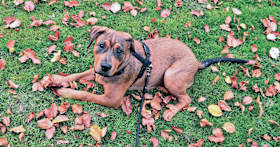

Behavior & Training

Behavior & Training
Consider your dog’s physical and emotional needs when deciding how long is too long to leave your pet alone.


Behavior & Training
Sometimes it’s okay. Other times, it can mean they’re feeling discomfort. Which one applies to your dog? We help you figure that out.
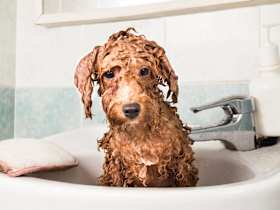
Behavior & Training
Here’s how salt and baking soda helps kill fleas and stop the itch.

Behavior & Training
Worried about your dog’s sudden fear of the outdoors? It’s a common concern. Here’s how to help them overcome their anxiety.

Adoption Advice
Find out how to set your adopted rescue dog up for success.
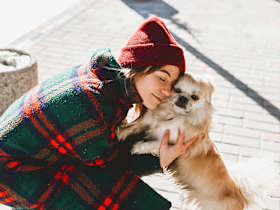
Breed Info
These mellow pups are here to match your homebody energy.
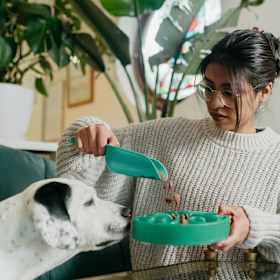
Pet Wellness
Curious about how to feed your new dog? This guide will answer your questions.
Behavior & Training
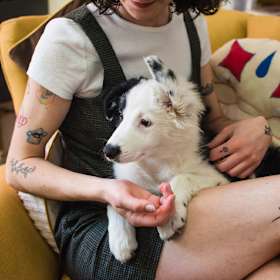
Adoption Advice
Thinking of adopting a dog? Learn more about the average monthly costs of dog parenthood.
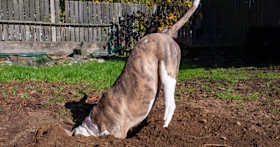
Behavior & Training
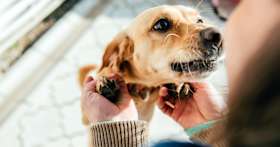
Behavior & Training
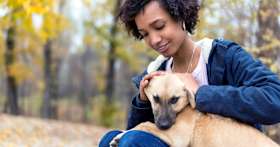
Behavior & Training
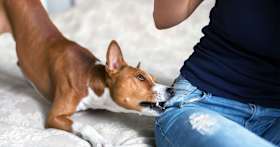
Behavior & Training

Behavior & Training
There are five different types of dog howls. Here

Behavior & Training

Behavior & Training
Pet parents, this is the bark-decoder guide you’ve been waiting for.
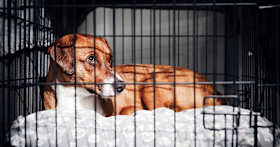
Behavior & Training
Discover when nighttime crating makes sense, when it doesn’t, and how to make it a positive experience.
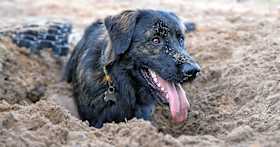
Behavior & Training
Can this kitchen staple actually stop dogs from digging?

Behavior & Training
Why mothballs might not be the digging prevention solution you’re looking for.

Behavior & Training
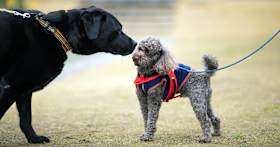
Behavior & Training

Behavior & Training

Behavior & Training
There are ways to curb this curious temptation.

Behavior & Training
Here are nine things you can do to help your dog be less anxious in your absence.
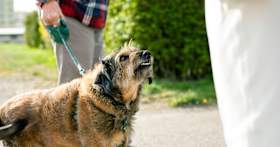
Behavior & Training

Behavior & Training

Behavior & Training

Adoption Advice
Adopting a new puppy? We've created a checklist to help you get organized before bringing your new friend home.

Behavior & Training
Does your dog experience separation anxiety? Explore helpful techniques to comfort and entertain your dogs while they

Behavior & Training